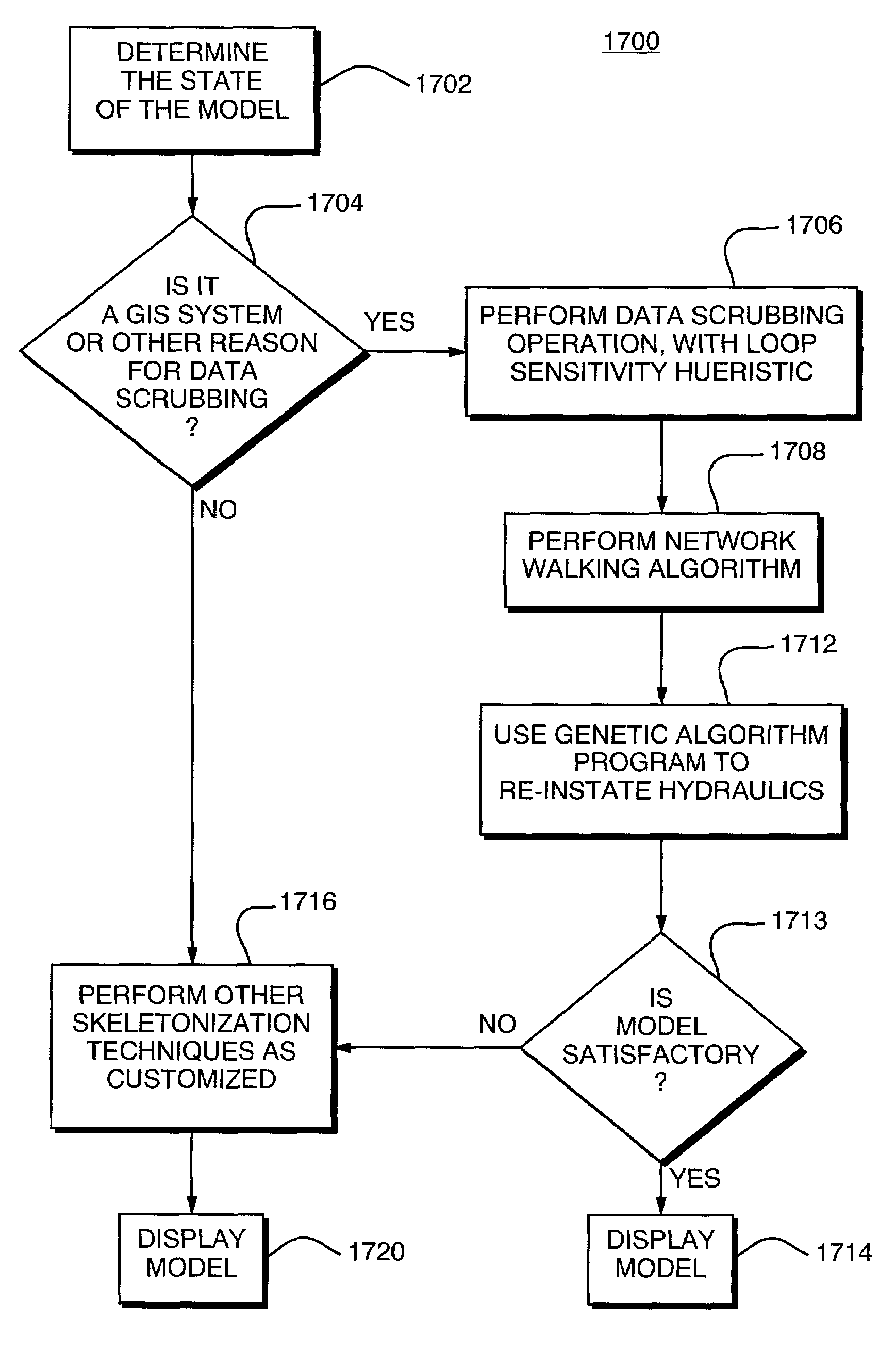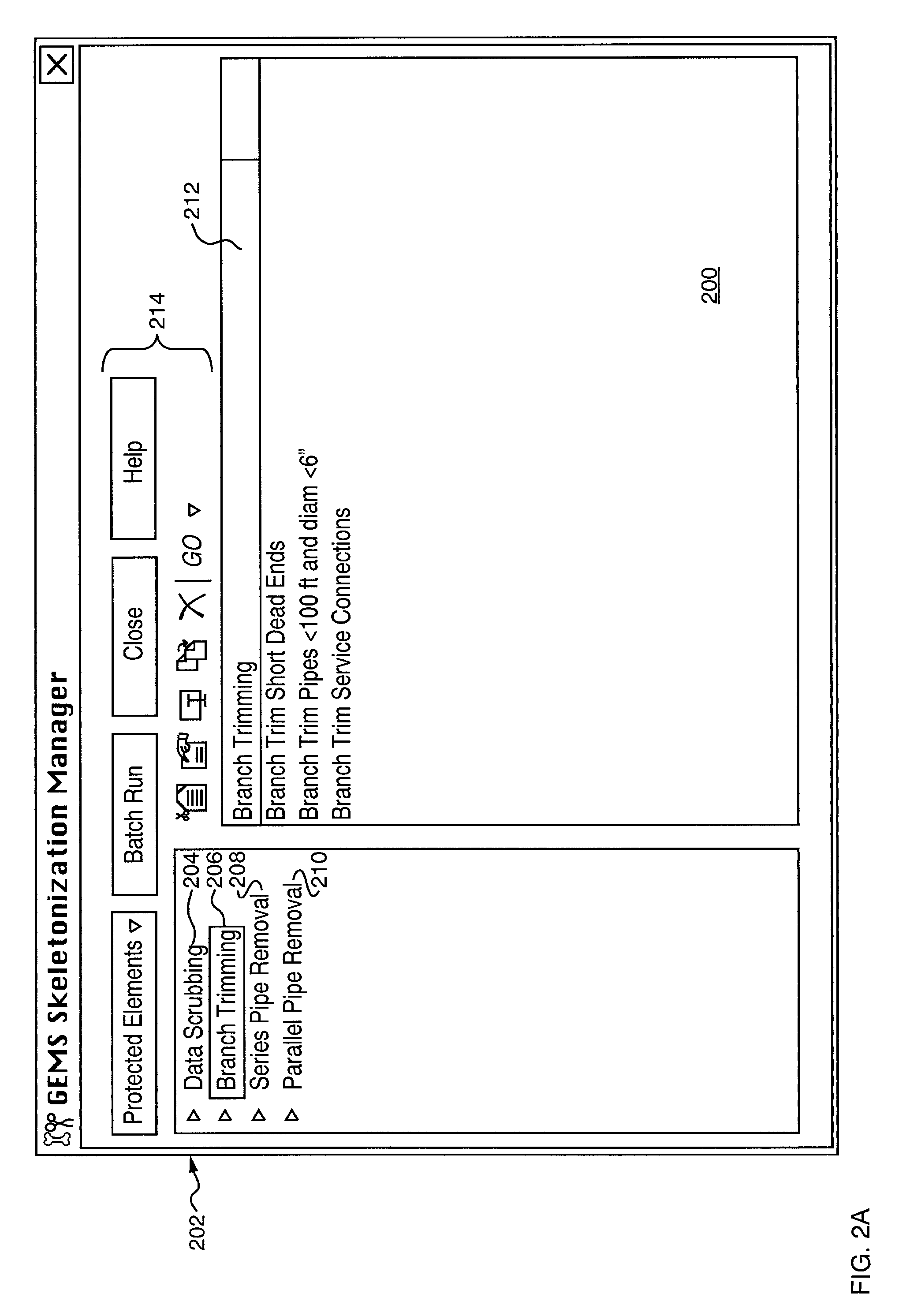Method and system for reduction of a network topology-based system having automated optimization features
a network topology and optimization feature technology, applied in the field of network topology-based system reduction, can solve the problems of limiting users, insufficient comprehensiveness, and requiring reallocation strategies, and achieve the effect of reducing the number of elements used and data scrubbing
- Summary
- Abstract
- Description
- Claims
- Application Information
AI Technical Summary
Benefits of technology
Problems solved by technology
Method used
Image
Examples
Embodiment Construction
[0043]The skeletonization and optimization system and method of the present invention are embodied in the system 100, which is schematically illustrated in FIG. 1. The system 100 includes the database 110, which includes tables and records that identify the elements of an engineering model. For purposes of clarity, this description is of an illustrative embodiment of the invention relating to a hydraulic water distribution network. It is within the scope of the present invention, however, that the features of the invention be applied to other types of engineering models, such as electrical grids, traffic or transportation models, and the like. Though not limiting to the invention, we have described herein the system and method of the present invention with respect to a hydraulic water distribution network.
[0044]An object model 130, which may be a COM (Component Object Model) based object model, is used for programmatic access to the data stored in database 110. Other software models...
PUM
 Login to View More
Login to View More Abstract
Description
Claims
Application Information
 Login to View More
Login to View More - R&D
- Intellectual Property
- Life Sciences
- Materials
- Tech Scout
- Unparalleled Data Quality
- Higher Quality Content
- 60% Fewer Hallucinations
Browse by: Latest US Patents, China's latest patents, Technical Efficacy Thesaurus, Application Domain, Technology Topic, Popular Technical Reports.
© 2025 PatSnap. All rights reserved.Legal|Privacy policy|Modern Slavery Act Transparency Statement|Sitemap|About US| Contact US: help@patsnap.com



